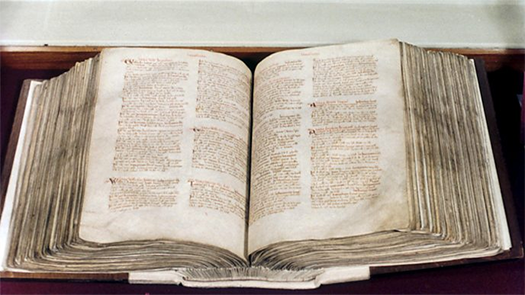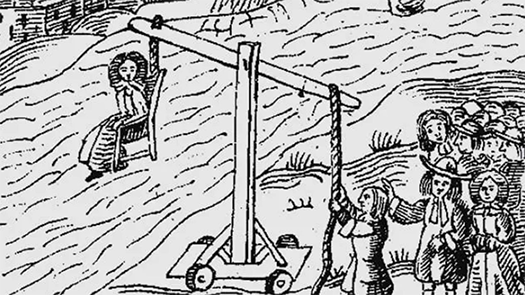The Wolves of Savernake is the first in a series of historical crime novels – the Domesday Series – featuring Ralph Delchard, a Norman soldier, and Gervase Bret, a former novice, now a lawyer. Gervase’s allegiances are complicated. He is half Saxon and half Breton: that is, from a Celtic people living in northern France. The novel is set about twenty years after William, Duke of Normandy, defeated King Harold in the Battle of Hastings in 1066. William justified his invasion with the claim that the crown was rightfully his, as promised by Edward the Confessor before he died. To give some perspective of the importance of this, Sir Walter Scott’s Ivanhoe is set in the late twelfth century when Richard the Lion Heart was returning from the crusades. Even at that stage, over a hundred years after the events of this book, there was still a deep divide in English society between English Saxons and Norman French. While Hollywood makes Richard into an English hero in various movies – his returning to save England from the terrible King John etcetera – Richard lived most of his life in France and couldn’t speak English. This was the situation for many in the predominantly Norman upper class for the first three centuries after William invaded.
So, when Ralph Delchard, Gervase Bret, Canon Hubert, Brother Simon and four men-at-arms arrive in the village of Bedwyn, their small retinue causes greater consternation for the Saxon inhabitants than the group’s numbers would seem to merit. These men serve the Norman king, William, and their presence cannot bode well. Like all villages across England, the residents of Bedwyn have undergone a meticulous survey of their holdings for the purposes of taxation. The record of these holdings became known as the Domesday Book, a name adopted by Edward Marston for this book series, which he may be using anachronistically, although who can be absolutely sure when a name was first coined. The first known use of the name was in the following century, but for his readers, Marston probably wants to avoid confusion: “The Conqueror himself might call it a description of all England, but the name which was muttered with cold irony in the shires was the Domesday Book.” In English, the book was officially known as The Book of Winchester (where it was kept). Now, Delchard’s group claims they have returned to reassess the work of the recent delegation. In fact, their mission turns out to have a more specific purpose, concerned with a land claim against the local abbey, made by the miller, Alric Longdon, who has just been found dead in Savernake Forest, killed, it is believed, by a wolf. The superstitious fears aroused by this death, of a ravenous killer free in Savernake Forest, is soon associated also with the intrusive Normans, the real wolves of Savernake, it is said.
A thematic connection like this might suggest a level of interesting historical or social insight in the novel that would make it more worth the read, beyond the apparent mystery of the death or the disputations over land. The fact is, those things are actually interesting enough, although the modern-seeming detective practices employed by Ralph and Gervase – they eschew prejudice, superstition and fear in favour of a more modern accumulation of evidence – are uncomplicatedly made a part of the story. In Umberto Eco’s The Name of the Rose we find the same thing, but William of Baskerville’s character is much more layered, as is his relationship with his religion which has provided him the opportunity to study outside Christian theology. William of Baskerville’s character anticipates aspects of Renaissance thinking because he is inspired by ancient writers like Aristotle whom other monks in the abbey wish to repress, even destroy. Ralph Delchard, it turns out, is an intelligent soldier, but a blunt instrument of the king who is most interested in pursuing his own carnal desires. Gervase is a thinker, but is in a similar situation as Eco’s Adso of Melk, a novice who is tempted by sexual desire. In The Wolves of Savernake, Gervase has left his religious order and his presence in the abbey for the purposes of the investigation is an example of a life that tempts Luke, himself a novice, to abandon his own calling for his sexual awakening. Put simply, Ralph and Gervase possess modern voices with which to speak to Marston’s modern audience. And speak they do so with uncomplicated opinions about the case: about the predations of the church and Hugh de Brionne, a local lord, as well as the pursuit of evidence and witnesses to achieve their ends. Both the church and de Brionne have formerly been in dispute about land now held by the church. But Alric Longdon’s claim, though he is now dead, may challenge both the right of the abbey and that of de Brionne.
Essentially, this is a modern detective story with a historical backdrop. Ralph is forced to intervene before an angry mob kills Emma, a healer who is feared as a witch, but the presence of a purported witch, a hermit and the superstitious fear that overwhelms the village concerning a large animal lurking in the forest is the stock-standard fare of medieval drama. Even so, the novel offers little by the way of historical insight. Marston’s protagonists seem to think much as we think, though their world, in reality, grew entirely different brains. Nor does the novel possess a driving idea beyond the desire to solve the mystery of the death and uncover the truth behind the land claim made by Alric before he was killed. This is light detective fiction, which was an okay distraction in a week when I had a lot of other things happening, because it is not a book that stimulates thought.
However, even making these concessions, the ending is somewhat disappointing and follows a predictable path. The solution made me wonder about the rest of the series. Each book has a formulaic title: “The [animal] of [place]”. This story focuses obsessively upon the idea of the wolf so much that as readers we cannot believe in it. But we don’t feel clever for having known this, much like we do against Emma Woodhouse who is naïve in her romantic machinations while we, as readers, see her faults all along. Instead, reading this feels more like watching Scooby Doo, the solution is so preposterous, the reveal just as cartoonish and lacking credibility. Also, the resolution of the legal dispute and the reappraisal of attitudes towards the Norman magistrates in the town is simplistic and idealistic in the final denouement. Edward Marston, so far as I can judge from this one reading, is a competent writer, but I suspect he will be a formulaic writer: good for light entertainment, but one should expect nothing more; good for turning off the brain. Not enriching like Eco or wise like Austen. It is what it is, and if you like disposable detective fiction, you may want to check out this book and the Domesday Series.

 RSS Feed
RSS Feed Facebook
Facebook Instagram
Instagram YouTube
YouTube Subscribe to our Newsletter
Subscribe to our Newsletter






No one has commented yet. Be the first!